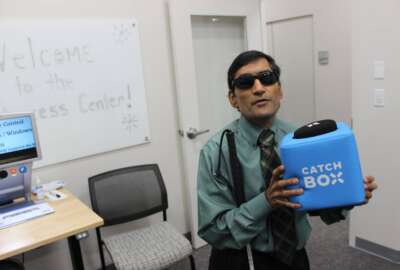The State Department should find better ways to measure progress on its diversity, equity, inclusion and accessibility goals.
Although the department does well in addressing things like employee involvement and diversity training, there is significant room for growth when it comes to accountability and measurement, the Government Accountability Office stated in a July 22 report.
GAO Director for International Affairs and Trade Jason Bair, the author of the report, said in an interview with Federal News Network that without measuring progress, there’s no sense of how the department is progressing toward it goals.
“The State Department can put down on paper, and senior officials can talk about the importance of supporting DEIA. They can come up with a new strategic plan that emphasizes DEIA issues,” he said. “But if they don’t have a system for moving forward and assessing how they’re doing on an ongoing basis, nobody inside the department or outside the department is really going to understand how that’s going.”
The department has made progress by, for instance, assessing current DEIA efforts and revising its DEIA strategic plan. The plan has yet to be released, but Bair said it will include an implementation team to ensure follow-through on the goals. Many of the department’s ongoing plans to improve DEIA follow the lead of President Joe Biden’s executive order for agencies to address barriers to equity in the federal workforce.
Part of State’s goals under the White House initiative included appointing a chief diversity and inclusion officer, for which the department picked Gina Abercrombie-Winstanley. Additionally, the department added some workplace flexibilities, like remote work arrangements and alternative work schedules. The department also provides technology and equipment to assist employees with disabilities.
But the department’s DEIA efforts leave “significant gaps” in measuring performance and determining how much progress it’s actually making toward its goals, the report stated. The way the department analyzes its advancements in identifying, investigating and eliminating barriers to workforce diversity is limited. For example, the department implemented measures attempting to improve the recruitment of women to some roles, without assessing why fewer women than men take the Foreign Service Officer Test.
“If State does not create a plan to improve its barrier analysis process and improve its methodology for identifying potential barriers, it risks using resources on solutions that do not address the root causes of disparities and risks leaving barriers unaddressed,” the report stated.
For the report, GAO also surveyed State Department employees, who gave high marks for senior agency officials when asked if they support DEIA goals. But the level of perceived support declined when looking lower down in the management chain, Bair said. About 70% of those surveyed for the report said the agency does not hold its leaders accountable for progress toward achieving DEIA goals. In particular, between 43% and 44% of respondents said follow-up on DEIA issues falls short of expectations.
The department has started the process of trying to hold leaders more accountable for progress and implementation of DEIA initiatives, Bair said, but more can still be done.
“That’s can be as simple as in an annual performance appraisal, which every employee gets, to have a component in there that says, ‘these DEIA goals are really important, what have you done this year to contribute to them?’ While they’ve made some modifications to the system, the question is, ‘how does that get implemented?’” Bair said. “I think that’s in the minds of some of the people who were skeptical in the survey. We see positive progress, but are they really going to follow through? That’s what we’re going to be looking for in the coming months and years.”
In one agency bureau, the State Department’s Bureau of Global Talent Management, the focus remains, in part, on cultivating DEIA across the department. The bureau works to get feedback from employees on diversity and inclusion efforts by meeting monthly with employee organizations. It also recently launched an access center to support workers with disabilities. Notably, at least 17% of the State Department’s civil service workforce has at least one disability.
Although the proportion of racial and ethnic minorities in the department’s civil service has increased overall, in senior roles, GAO said historically disadvantaged racial and ethnic groups, as well as women, are underrepresented. A 2020 report found that minorities in the State Department’s civil service workforce were between 4% and 29% less likely to be promoted than their white coworkers with similar education, occupation or years of federal service. And Bair said those numbers likely haven’t changed since 2020.
“The reality is, those numbers are hard to change in a matter of just a couple of years, so I don’t expect that they have changed substantially.” Bair said. “That’s something that the State Department is committed to improving, but that’s going to take time.”
To make changes, GAO recommended establishing performance measures, enhancing accountability, creating a plan to improve the barrier analysis process and improving its statistical methodology. The agency concurred with all of GAO’s recommendations.
Making those systemic changes will be a long process, but there are some key areas that can start sooner rather than later. For instance, Bair said the department can move forward more quickly on improving its methodology for identifying potential barriers to diversity, compared with creating a strong set of performance measures, which is a longer and more complex process.
“This is clearly an important priority from the secretary on down,” Bair said. “Having said that, these aren’t necessarily easy things. I expect that it’s going to take some time.”
Copyright
© 2024 Federal News Network. All rights reserved. This website is not intended for users located within the European Economic Area.
 Exclusive
Exclusive